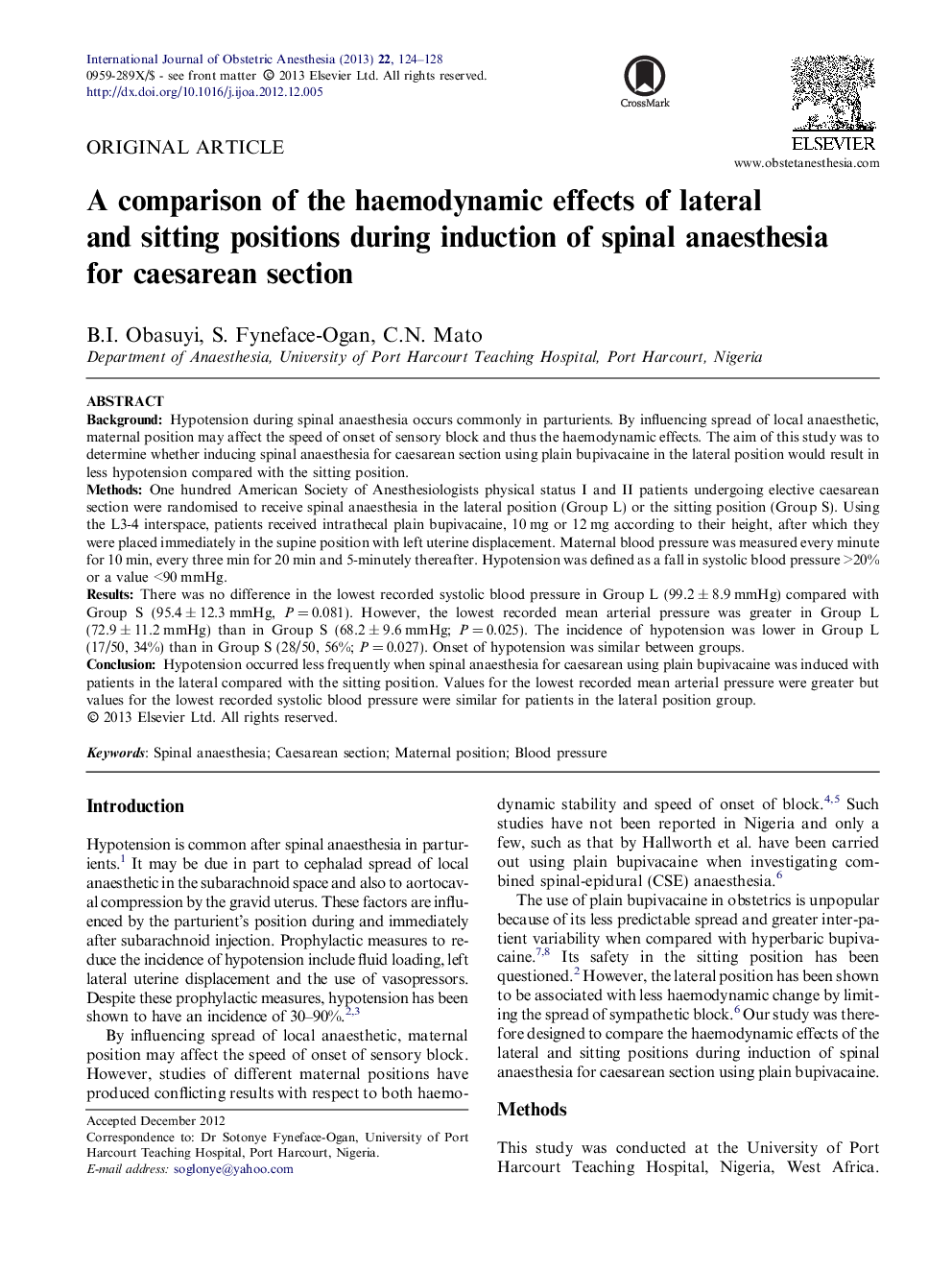| Article ID | Journal | Published Year | Pages | File Type |
|---|---|---|---|---|
| 2757839 | International Journal of Obstetric Anesthesia | 2013 | 5 Pages |
BackgroundHypotension during spinal anaesthesia occurs commonly in parturients. By influencing spread of local anaesthetic, maternal position may affect the speed of onset of sensory block and thus the haemodynamic effects. The aim of this study was to determine whether inducing spinal anaesthesia for caesarean section using plain bupivacaine in the lateral position would result in less hypotension compared with the sitting position.MethodsOne hundred American Society of Anesthesiologists physical status I and II patients undergoing elective caesarean section were randomised to receive spinal anaesthesia in the lateral position (Group L) or the sitting position (Group S). Using the L3-4 interspace, patients received intrathecal plain bupivacaine, 10 mg or 12 mg according to their height, after which they were placed immediately in the supine position with left uterine displacement. Maternal blood pressure was measured every minute for 10 min, every three min for 20 min and 5-minutely thereafter. Hypotension was defined as a fall in systolic blood pressure >20% or a value <90 mmHg.ResultsThere was no difference in the lowest recorded systolic blood pressure in Group L (99.2 ± 8.9 mmHg) compared with Group S (95.4 ± 12.3 mmHg, P = 0.081). However, the lowest recorded mean arterial pressure was greater in Group L (72.9 ± 11.2 mmHg) than in Group S (68.2 ± 9.6 mmHg; P = 0.025). The incidence of hypotension was lower in Group L (17/50, 34%) than in Group S (28/50, 56%; P = 0.027). Onset of hypotension was similar between groups.ConclusionHypotension occurred less frequently when spinal anaesthesia for caesarean using plain bupivacaine was induced with patients in the lateral compared with the sitting position. Values for the lowest recorded mean arterial pressure were greater but values for the lowest recorded systolic blood pressure were similar for patients in the lateral position group.
